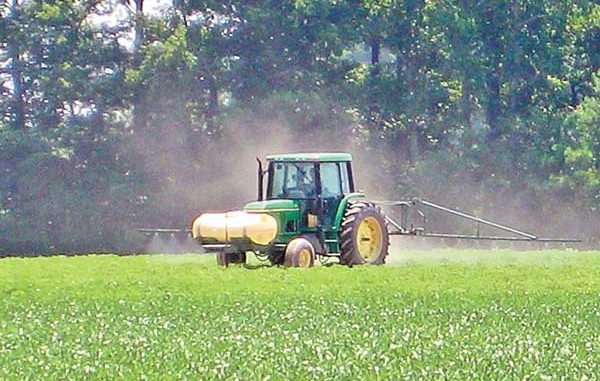
June unravels the last few layers of spring, marked by warm, moist nights and longer days.
By now, warm-season food plots should have successfully germinated and sprouted through the soil’s surface, reaching towards the sun. Racing alongside, aggressive weeds begin to cover the bare ground amongst the carefully-placed seeds and soon will choke out the food- plot plants. As ground is exposed by plowing or discing, thousands and thousands of dormant weed seeds germinate together with the food-plot seeds, both energized by the fresh fertilizer. In most cases, growing successful food plots does not end with planting. The land manager must intervene and control the unsightly growth of invasive weeds. The most-important defense against unwanted weeds is to control them while they are young and vigorously growing.
Plots must be released mechanically and/or chemically to allow the targeted species to thrive without the threat of pesky weeds taking over.
Of course, the planting method will determine if mechanical methods are feasible. Row-planted species can be mechanically-tilled with chisel plows between the rows to discourage undesirable species from growing. Most food plots are drilled or broadcast-planted, and mechanical release is usually not feasible in these situations. However, some food-plot species, such as clover, alfalfa, and trefoil are engineered to tolerate heavy browsing from wildlife — and many common weed species are not. In this case, regular mowing will deter weeds and quickly encourage target species to thrive.
Chemical release using selective herbicides is more common and generally more effective. Prescribing the correct herbicide treatment is determined by the specific food-plots species planted. The easiest and most-effective selective herbicide treatments are applied on plots planted with Roundup Ready corn and soybean plot mixes such as Mossy Oak Biologic’s Biomaxx. Biomaxx’s soybean and corn seed are resistant to glyphosate (the main ingredient in Roundup herbicide), allowing the land manager to control invasive weeds and kick-start uninhibited growth.
Other than products like Biomaxx, choosing the correct herbicide is more complex. First, the weed must be identified as either a broadleaf or a grass. Most problem weeds are grasses, and most food plots are broadleaf plants.
The most-effective grass killer in broadleaf food plots is Poast, which kills bermuda, johnsongrass, foxtail grass, crabgrass and other common invasive grasses battling clover, joint vetch, peas, brassicas or beans.
Repeated application may be necessary to completely control weeds. Boom sprayers mounted to tractor or four wheelers are the most effective application method. When spraying plots, measure and mix herbicide concentrate into a sprayer half-filled with water, then completely fill it with water. Drive evenly across the food plot several times until the tank empties. The extra water and repeated application will allow for even coverage over the food plot. Closely read the label at least twice to ensure proper application.




Be the first to comment